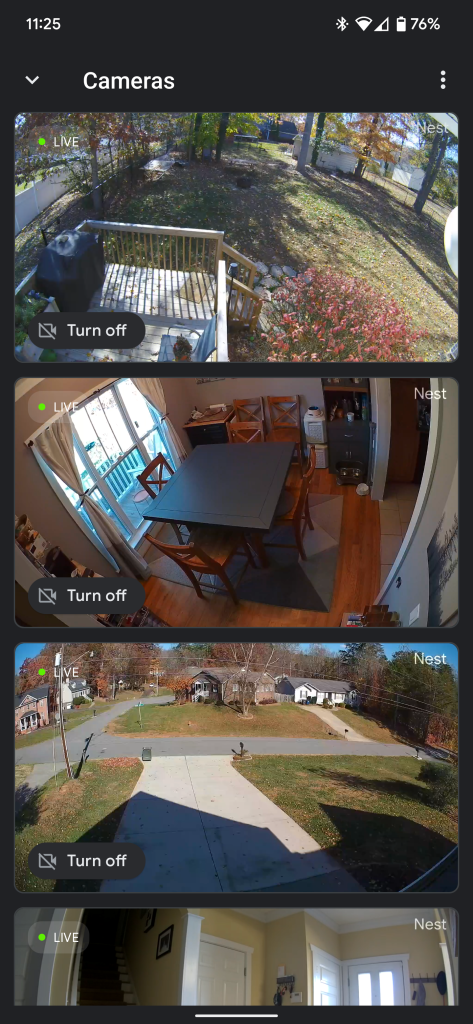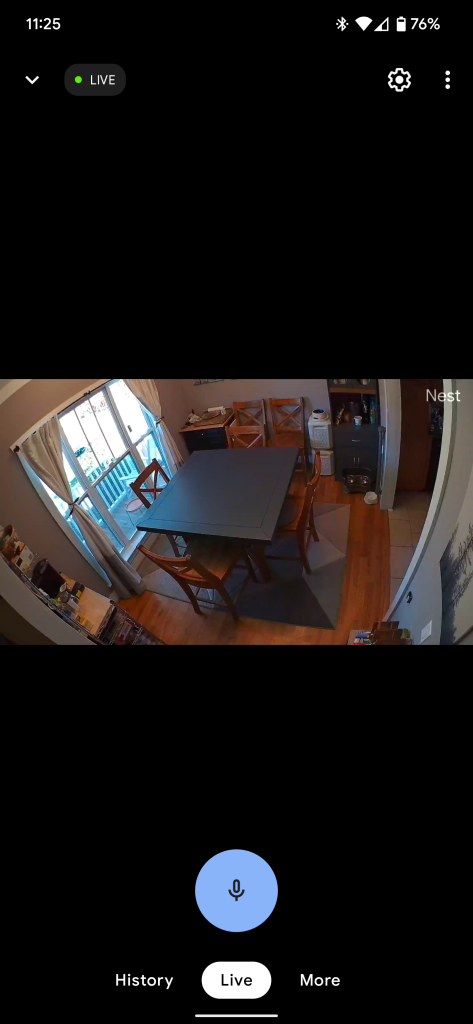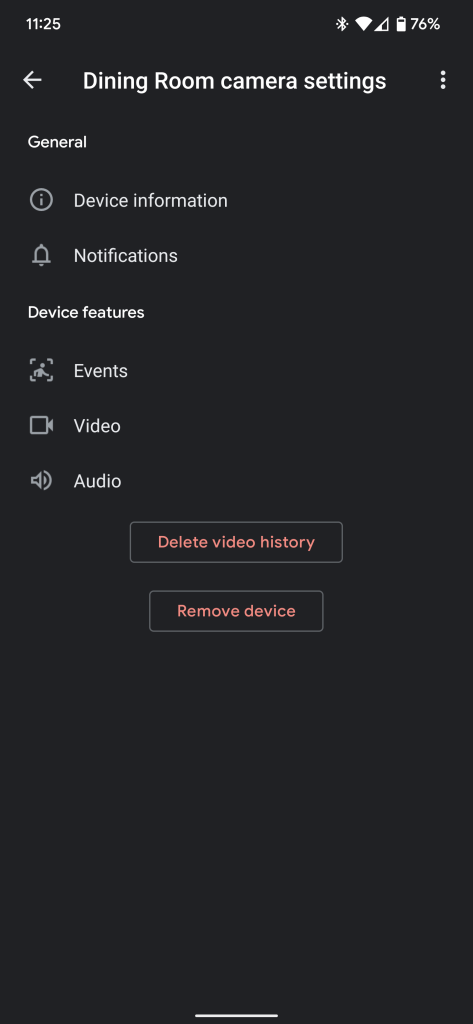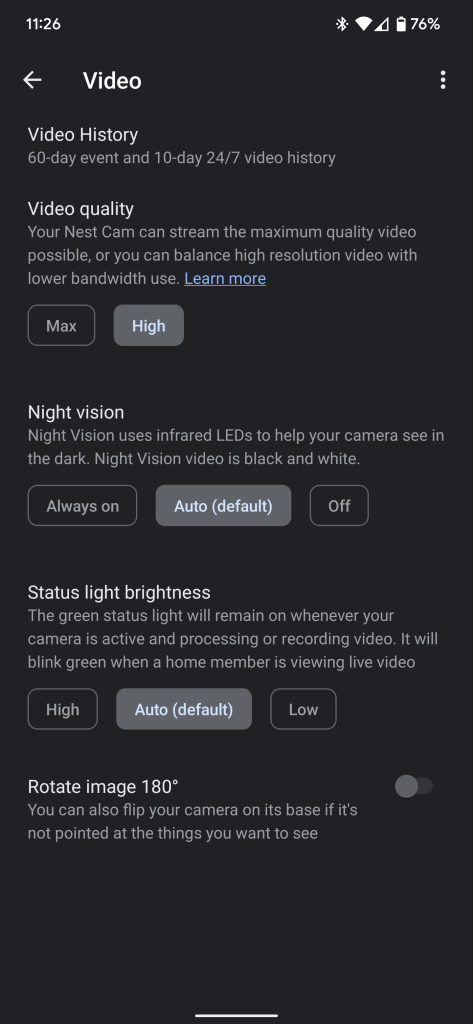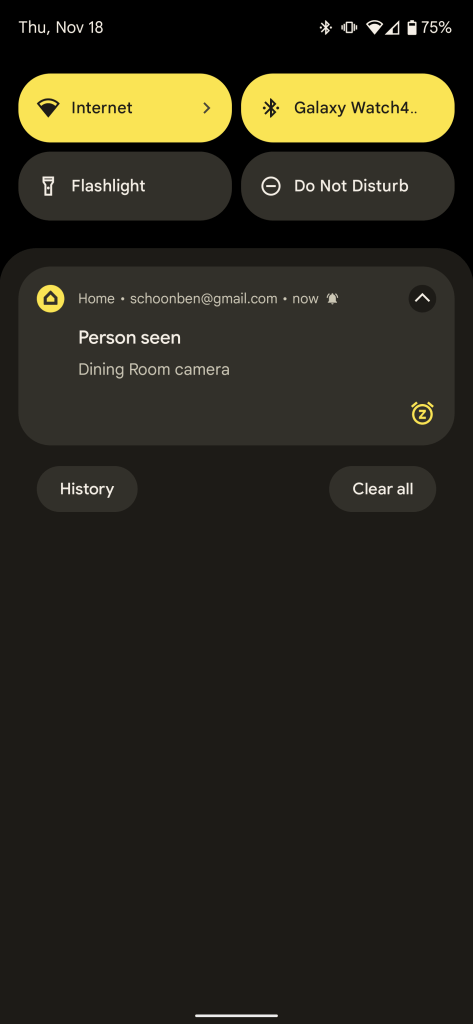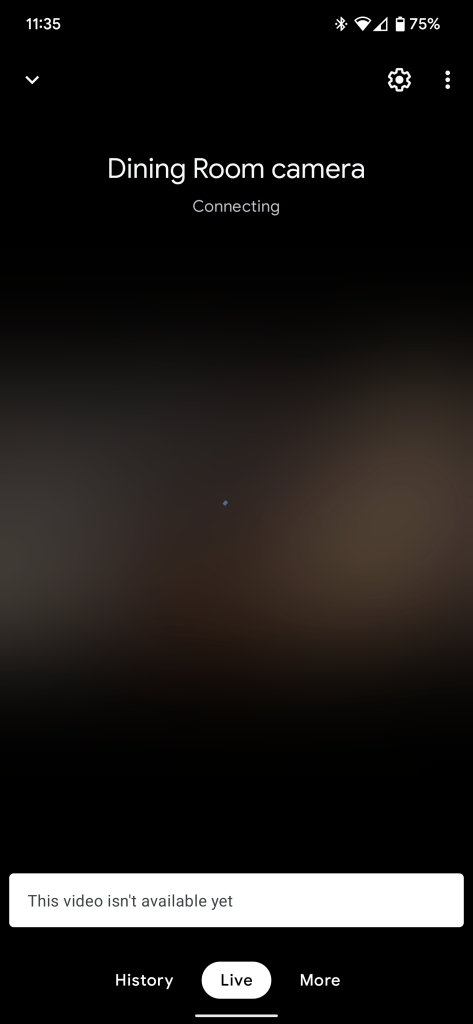
Smart home cameras are an easy way to add a layer of security to your home or to just keep an eye on things remotely. Google’s Nest Cam lineup has long fulfilled that purpose, but in the six years since its previous indoor camera release, the competition has stepped up. Finally, Google has released a new Nest Cam (wired) for a lower price than ever, but the choice isn’t as clear as it used to be.
Hardware
The very first thought I had when unboxing the new Nest Cam (wired) was that the hardware was absolutely adorable. The new design Google has put out is clearly inspired by 2017’s IQ lineup, and it’s a great look that has a real Pixar lamp vibe. The small physical size, too, just fits so well in the home.
The hardware is split into two distinct rounded pieces. The first is the base, which is dense in weight, but actually the smaller of the two pieces. A metal rod on an adjustable hinge then connects to the camera itself, which can be rotated to fit the needed angle. This works whether the camera is sitting flat on a table or mounted sideways to a wall. It’s a simple but effective design.
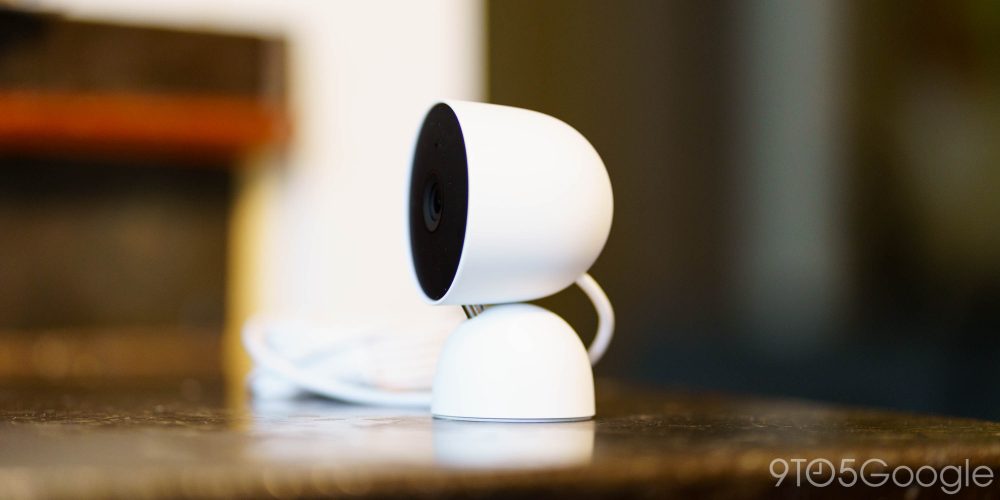
Google sells the new Nest Cam (wired) in “Snow” white, “Linen” gray, “Fog” blue/green, and “Sand,” the latter coming with a maple-wood base. The company provided our review unit in “Snow,” and I was happy with the overall look. While it doesn’t really hide itself in my home’s decor, it also doesn’t draw too much attention to itself, and feels much more subtle compared to its older sibling from 2015, and even competing cameras from the likes of Arlo, Ring, and others. In terms of design, I think Google has a clear winner on its hands.
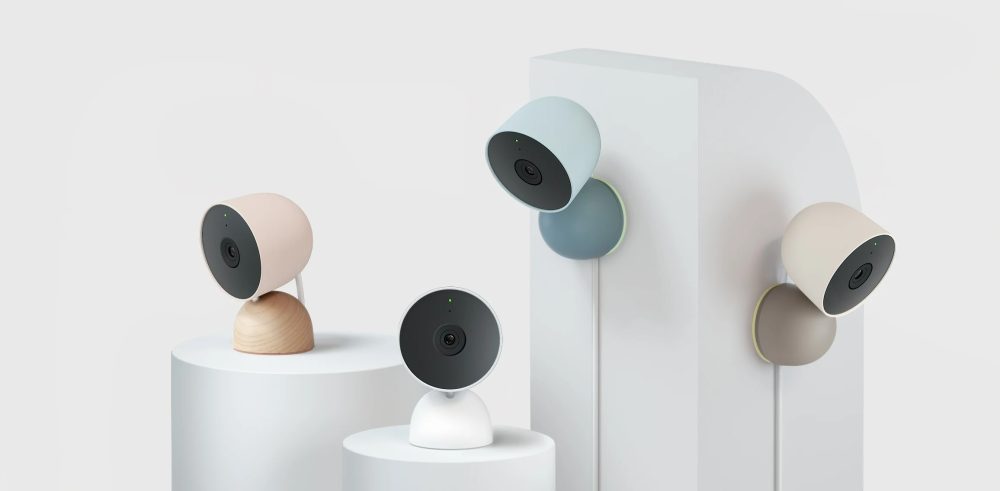
Perhaps the best part of the design, for me, was the mounting mechanism. The bottom piece of the base twists off to reveal two screw holes that makes mounting this camera a process that takes quite literally a minute or two. I do wish the bottom of the mount was more friendly to adhesive mounting methods — renters deserve to mount, too — but it’s a very well done setup.
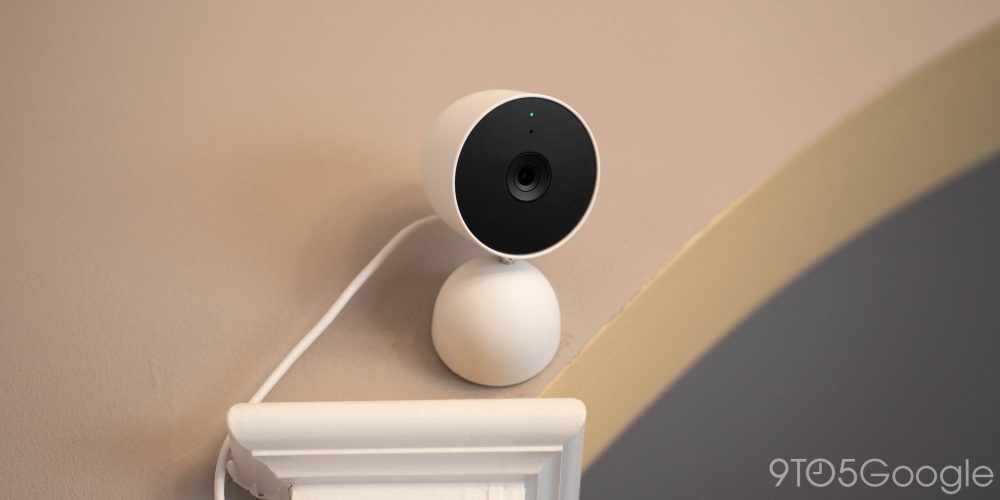
Camera quality
As great as the hardware around it is, one of the key aspects is just not cutting it. The 2MP, 135-degree FOV sensor in the Nest Cam (wired) is not nearly as good as it should be. It’s lower in resolution compared to the 2015 model, which results in lower 6x optical zoom and less detail in the image.
In a bubble, though, the camera quality here is technically fine. There’s just barely enough detail in the image to see everything in a room that the camera is viewing. It’s really only when zooming in that this becomes a problem, as smaller details farther away from the camera can be hard to make out. There is a “max” quality setting for recording, but the difference is negligible at best.
The quality here isn’t unacceptable, but it’s a big step back from the Nest Cam IQ and even the Nest Cam Indoor that this model replaces.
-
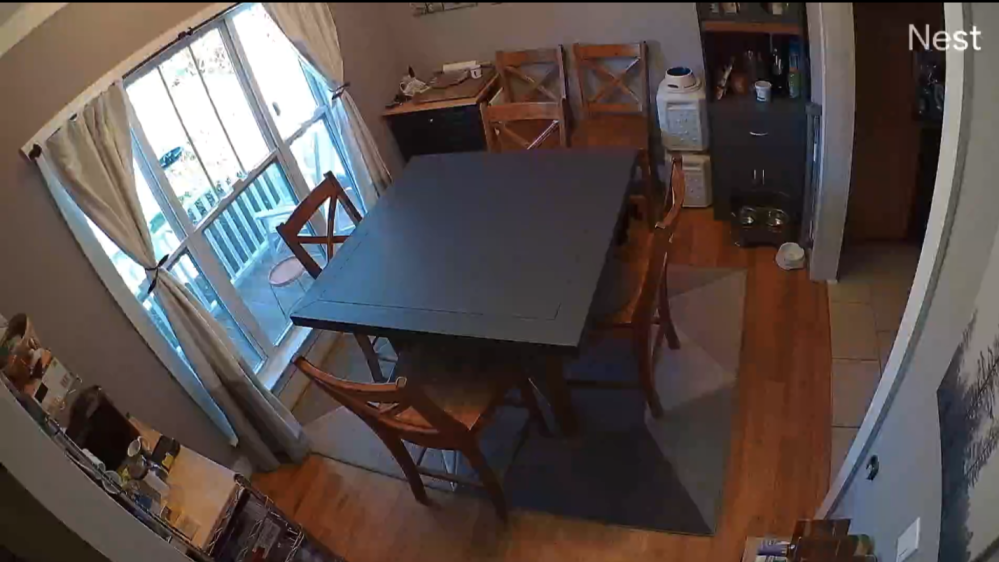
Day (lights on, “high” quality) -
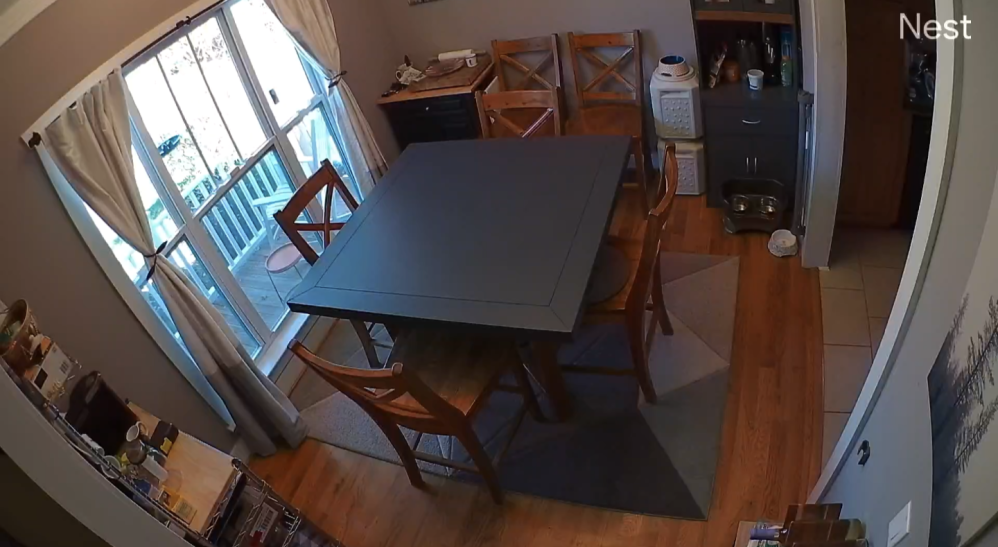
Day (lights on, “max” quality) -
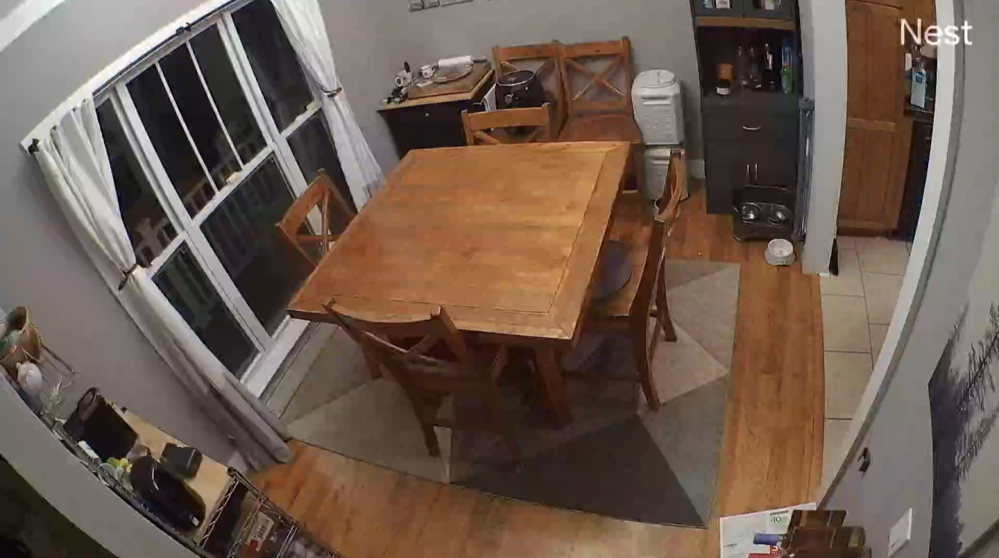
Night (lights on) -

Night (lights off)
The bigger problem is how this camera handles HDR processing. As mentioned, I set up the camera in my dining room, an area of my home where I have large windows that dominate nearly an entire wall. This proved incredibly difficult for the camera to handle if the windows were in view, especially on a sunny day. The highlights were absolutely blown out, and the resulting shadows in the room made details incredibly hard to see. These are the results I’d expect out of a bargain-bin camera, not one that costs a penny shy of $100.
This is something I’m sure Google can fix in future software updates. After all, we’re talking about the same company that works magic on its Pixel smartphone cameras, so the capabilities are certainly there, even if they’re currently in a different department.
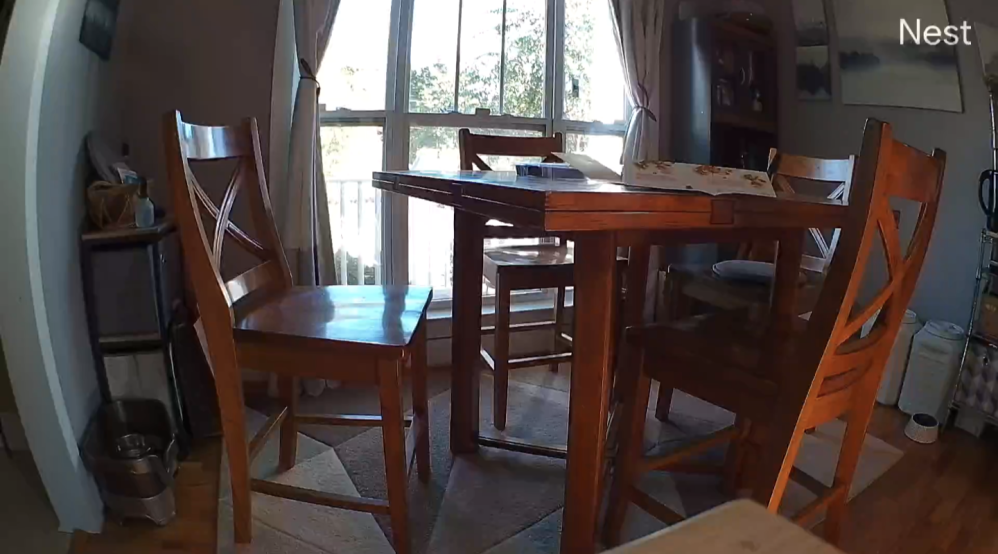
On the bright side, night vision seemed unaffected by both issues mentioned here. While I wish Google had adopted the newer night vision technology that enables color picture at night, the IR-based system kept a room well illuminated, and even in black and white, I could make everything out easily.
Software
Cutting right to the chase, the biggest weakness of Google’s new camera is without a doubt the app needed to use it. The Google Home app has a lot of great ideas, but its handling of the Nest lineup is a far cry from the focused greatness of the previous Nest app. Instead, it’s messy and unfinished, which might as well be the slogan for the Home app as a whole.
We went into much more detail on this in our review of the $179 Nest Cam (battery), but the Google Home app is just not as good at its job as the Nest app was, and you can’t use this new camera or any of Google’s latest Nest hardware in that older app in any capacity whatsoever.
Through the Home app, the new Nest Cam (wired) can show a live feed, scroll through history, adjust settings, and be toggled on and off. The camera can also be used in Google Assistant routines including the “Home/Away” routines. The fit and finish, though, just aren’t there. For instance, you can’t set a schedule on the new Nest Cam, which makes it almost useless in large portions of my home. While I’m not concerned with Google’s handling of privacy, that doesn’t change the fact that I don’t want cameras on in the portions of my home that I’m using during the day. To fit that need on older cameras, I have a daily schedule that ensures the camera turns on at night, regardless of if someone is home or not, and the Nest app’s “Away” routine turns the camera on when I leave. In the new setup, I cannot replicate that functionality at all, which is why, personally, I won’t be upgrading most of the cameras in my home for the foreseeable future.
But beyond that, there are other fundamental flaws. Google’s new History view is much slower at loading both marked clips and random points in time when using 24/7 recording. I’ve had several occasions where the app simply gave up on trying to load a clip, only to work for the exact same function a little while later. The new history view, too, won’t offer a live preview as you scroll through history which really cuts down on how useful it is. I primarily used this camera to keep an eye on our Dining Room, the place where our dogs love to settle down when we leave the house. Not being able to quickly sort through history made this camera much less useful for that task than older models.
Moving from the Nest app to the Home app also break other long-time features, such as the ability to share a stream with other people, or integration with Alexa. I don’t consider these losses to be deal-breakers, though. With the latter especially, it’s not like Amazon’s cameras return the favor Nest presented for years.
But really, these issues really just scratch the surface of what’s wrong with the Google Home app when it comes to these new Nest cameras. The settings are messy and hard to sort through, feeds are often slow to load up, clips can’t be saved to your account and can’t be manually created, and there’s just so much more, but the real problem is how long it’s taken Google to fix these problems. At the time of this review’s publishing, new Nest cameras have been actively on sale for over three months, and Google hasn’t fixed any of the issues we’ve talked about to date. While I’m sure things will be patched up in time, as someone who invests their own money in this ecosystem, it really puts a sour note on that investment to see that Google is so slow to make any real progress. Blog posts talking about commitment and future plans are great, but they don’t mean much without actual follow-through.
No one should have to buy a product on the promise of future fixes, and there’s no excuse for how unready the Home app was for these new cameras because, again, Google had years to prepare.
Like most smart home cameras, Nest Cam (wired) will send notifications to your phone when it detects motion, people, or other objects. The notifications, in my experience, over the past couple of months, are very fast to arrive, but the app really hinders that. I’ll get a notification within seconds of an event happening, but it won’t have a picture preview that quickly, and even clicking the notification to see the clip in the app often leaves me with a message saying that the clip “isn’t ready yet.”
The notifications are super fast because of Google’s clever new on-device processing that recognizes objects directly on the camera’s local machine, rather than using AI on Google’s servers to process the data. I never felt as though the old Nest Cam Indoor was particularly slow at this task, but the new model really does do a great job in making that process as fast as possible.
The negative parts aside, there are still good things that have changed over the past few years. One area I feel Google still holds a lead against others, for instance, is still in its software. While the Google Home app is a colossal step back from the Nest app, it’s still stronger than many competitors. The Home app is unfocused, but it’s better organized than Arlo’s app, for instance.
Another thing that helps is the cloud storage nature, which is generally faster for viewing history than using an app to connect to a server, only for the server to talk back to your camera, which is using local storage. The downside of that, though, is that increasingly common server outages or internet problems can make your camera useless for security. Thankfully, Google has fixed that.
Nest Cam (wired) includes limited local storage in its hardware. There’s no microSD card or any other form of additional storage needed, as it’s ready to go whenever it’s needed. The on-board storage will keep recording for up to an hour continuously and send that footage off to your account the moment its connection is restored. This is an aspect I actually found quite useful, as I’ve been dealing with internet problems frequently due to my local ISP. Going back through history, I never see gaps anymore.
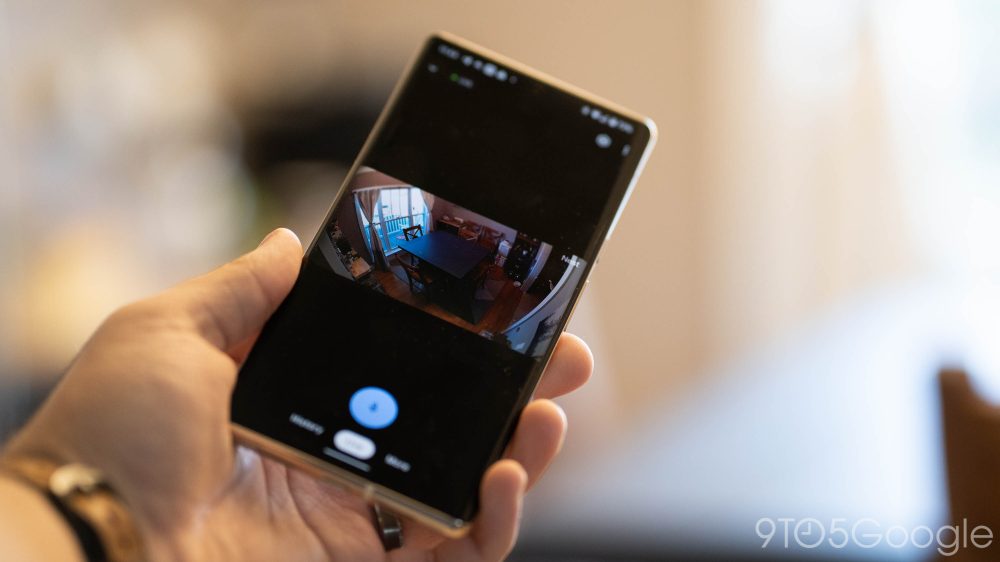
Yes, local storage using a microSD card has many of its own advantages. The footage can be parsed through on a computer, you can store more offline, and it means the camera works completely without a subscription. However, I’ve always found that the usability of cameras with microSD storage is negatively impacted. TP-Link’s Kasa lineup, for instance, always feels incredibly sluggish to pull up camera history, where Google’s is significantly faster. Local storage is great, but it’s Google’s software that makes it genuinely useful.
Perhaps the single most important thing to know about Google’s cameras is that you really need to subscribe to Nest Aware to make them useful. Without the paid subscription, the Nest Cam (wired) is limited to recording clips for three hours. This is an ongoing limit, meaning if the camera captures a clip at 1 a.m., the footage will be gone by the time you wake up. It’s a better offer than competing cameras such as Arlo’s systems offer for free, but it’s not really that useful.
Nest Aware, which starts at $6/month or $12/month, depending on tier, opens up recording history for up to 60 days (10 days event-based) and adds smarter alerts. This includes face detection, which works very well on this hardware.
The question of whether or not it’s acceptable for a $99 camera to require a monthly subscription is a debate for another day, but know that if you plan to buy this camera, you’ll need the subscription to use it to its fullest.

Final thoughts
A $99 camera from Nest should be a no-brainer for a lot of people. Strong integration with Google Assistant, a reputable company behind it, and a release six years in the making should be something that’s easy to recommend. But… the final product just isn’t.
Older Nest Cams, despite their age and price, were a pretty easy recommendation. Even though video quality wasn’t exactly the best in the business, it got the job done very well, while the software generally outclassed most competitors. I still find this new generation has a slight edge in software speed and general reliability, but that’s a gap that’s closing, and one that a $50 price difference is harder to justify. There are certainly people the new Nest Cam is for, but it’s no longer going to be anywhere near the gold standard. Rather, it’s just filling a niche others aren’t, the niche of Google’s ecosystem.
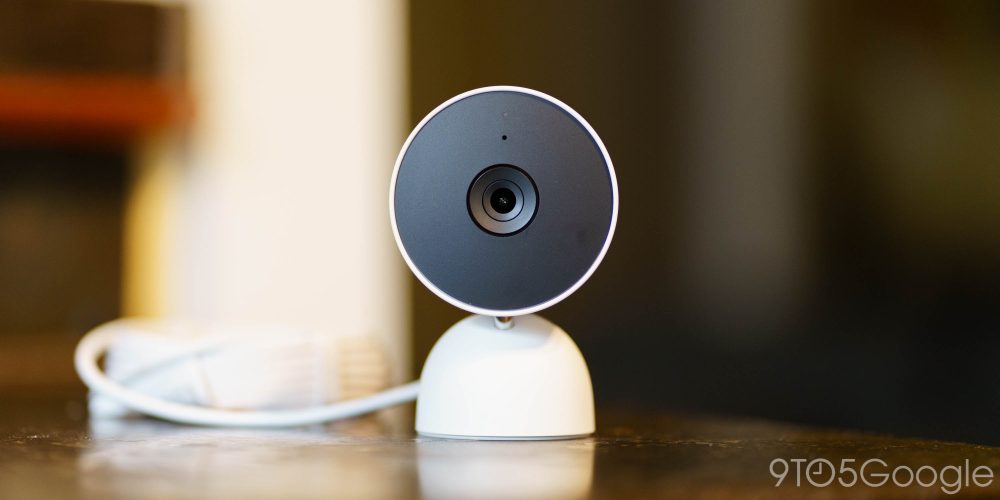
When it’s on sale for $70 or so, which has already happened a few times (stay tuned to 9to5Toys) and is the case as we’re pushing this review, Google’s new indoor Nest Cam is a decent buy in my book. The addition of backup storage for internet or server outages makes it much more attractive, and the flexible new design is a great successor to the original “Dropcam” idea. However, it comes with caveats. If you’re hoping to use it without a subscription, don’t bother, the three-hour limit is better than nothing, but makes the camera useless for security purposes. Important too is your current setup. If you’re a current Nest Cam owner with older generations, the new model makes for a messy ecosystem.
Where to buy Nest Cam (wired)
Author: Ben Schoon
Source: 9TO5Google



